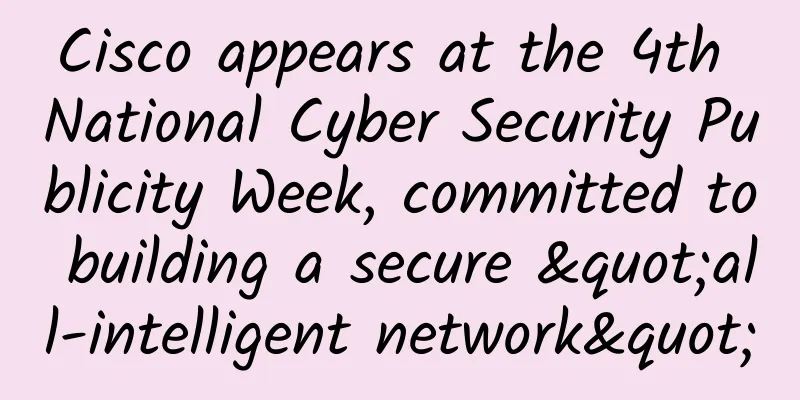Huawei Telnet and Stelnet login methods that make people dizzy

|
I am Zhao Jiexu, a lecturer at 51CTO Academy. On the occasion of the 51CTO Academy "4.20 IT Recharge Festival" (April 19-20), I would like to share with you my experience of Huawei Telnet and stelnet login methods. The reasons why various authentication and login methods feel confusing can be summarized as follows: 1. Complex configuration commands (objective reasons) 2. Not really understanding the configuration ideas (subjective reasons) So today, let’s experience various authentication and login methods through experiments so that everyone can have clear ideas while learning. The experimental topology is relatively simple. The two routers R2 and R3 are connected to the two ports of the switch respectively. The interface addresses on the routers are as shown in the figure, so that both sides can ping through! 1. Simple Telnet 1. Let's start with Telnet. Enable Telnet service on R3. To log in to R3, you must enable the telnet channel, set the login method to password and set the password to huawei.
Telnet R3 on R2 and enter the password huawei to log in to R3, as shown below:
2. The problem is that in this R3 mode, typing system-view does not enter the system view mode. What is the reason? Use the question mark to view the available commands, and the result is that there is no such command (as shown below). The reason is that the user permissions are not set, so when configuring user login, the user permissions are generally configured .
3. Configure the user level on R3 to a maximum of 15
It's that simple to do it, just understand the whole process! 2. Telnet based on aaa authentication The above configuration is easy to implement, but the problem is here! All administrators who use the same password to Telnet to R3 are still not safe. One day, an administrator is dissatisfied with the company and changes the login password "huawei", which makes other login passwords unusable! Solution: Each administrator is assigned a user name and password, and each uses his or her own account and password to log in. The authentication method is AAA authentication, and each user is assigned an account and password.
Set up a second account and password.
Configure the authentication mode on the vty channel to aaa.
Note that aaa is a local management. The created username and password can be used for Telnet service as well as other services. Therefore, the authentication mode should be specified as aaa on the vty channel. vty 0 4 (allows 5 users to access the device at the same time). If the sixth user Telnet accesses the device, the connection will fail. 3. stelnet Continue to explore the problem. Telnet uses AAA authentication to set different users and passwords, which enhances security. However, by capturing and analyzing Telnet's data packets, you will find that the username and password can be captured, so these usernames and passwords are not safe. How to solve it? Use stelnet digital certificate authentication and SSH protocol to solve the problem of Telnet transmitting plain text. First, create a key pair.
At this time, the SSH protocol is used for authentication, so the protocol type SSH for inbound traffic is defined in the vty channel.
The user is still the user managed by aaa before. You can add SSH service type. The password level has been configured before. If you have a new configuration, you must remember to set it . Remember to assign permission level as long as the user is set.
After configuring aaa, confirm that ssh uses a password for authentication. This should be the default and you don't need to type it.
Check the status of ssh server is closed.
So you need to enable the stelnet server service on the server side.
After the server configuration is complete, return to R2 to start the first connection and load the certificate on the server.
Login successful. 51CTO Academy 4.20 IT Charging Festival (On the 19th and 20th, 100 video courses are free to grab, and members can enjoy a 40% discount on video courses, non-members can enjoy a 30% discount, and packages can enjoy an additional 20% discount, and micro-jobs can enjoy a huge discount of 2,000 yuan) Activity link: http://edu..com/activity/lists/id-47.html?wenzhang Related video tutorials: IT technology exchanges at 51CTO Forum http://bbs..com/thread-1491072-1.html Learn Network ACL Technology Online Course http://edu..com/course/course_id-8148.html Learn site-to-site VPN technology online course http://edu..com/course/course_id-7485.html Learn Policy Routing Technology Online Course http://edu..com/course/course_id-8103.html |
<<: "Internet +" activates new driving force for Nong'an's development
>>: 5G mobile network is accelerating and may be commercially available in 2019
Recommend
The Data Security Law has been officially announced! How to manage risks and protect sensitive corporate data?
On June 10, 2021, the "Data Security Law of ...
Operators have confirmed: The first generation of 5G mobile phones can only use 4G networks
Recently, the inability of NSA 5G phones to conti...
China's 5G construction efforts will not be reduced in 2021 and is expected to usher in a "mobile phone replacement wave"
While the pandemic delayed global 5G construction...
Developers meet in Guangzhou to check in at Kunpeng Salon and see how new computing can enable smart government office!
[51CTO.com original article] At 2:00 pm this Frid...
P2P market needs regular troops. Yunyou Holdings acquires Jianlicai to focus on technology finance
[51CTO.com original article] The earliest P2P onl...
Western European countries top global broadband speed rankings
[[423948]] Western Europe dominates the global in...
Is 5G really going to kill WiFi?
If we were to say what surrounds our lives nowada...
To ensure the healthy development of 5G, we must start with the standardization of business data release
On the eve of the Spring Festival, the Ministry o...
Does it just look familiar? What is the advantage of 802.11ac Wave2?
When choosing wireless routers or APs, especially...
Millimeter wave: a hurdle that 5G deployment cannot overcome
5G is seen by the industry as a revolutionary wir...
What to do if the Wi-Fi signal at home is not good? Here are 4 tips
Everyone needs Wi-Fi at home, but for various rea...
Will 5G charges be "cheap"? Operators: Not very expensive
From the issuance of 5G commercial licenses to th...
Which router has the best wall penetration effect? Wireless router pit prevention guide
When buying a wireless router, the first thing to...
Six IT trends to watch in 2023
Businesses and society at large continue to turn ...
80VPS: Korean CN2 server starting from 350 yuan/month, 2*E5-2450L/8GB/1TB/10M bandwidth/quick launch
80VPS is a Chinese hosting company that was estab...









